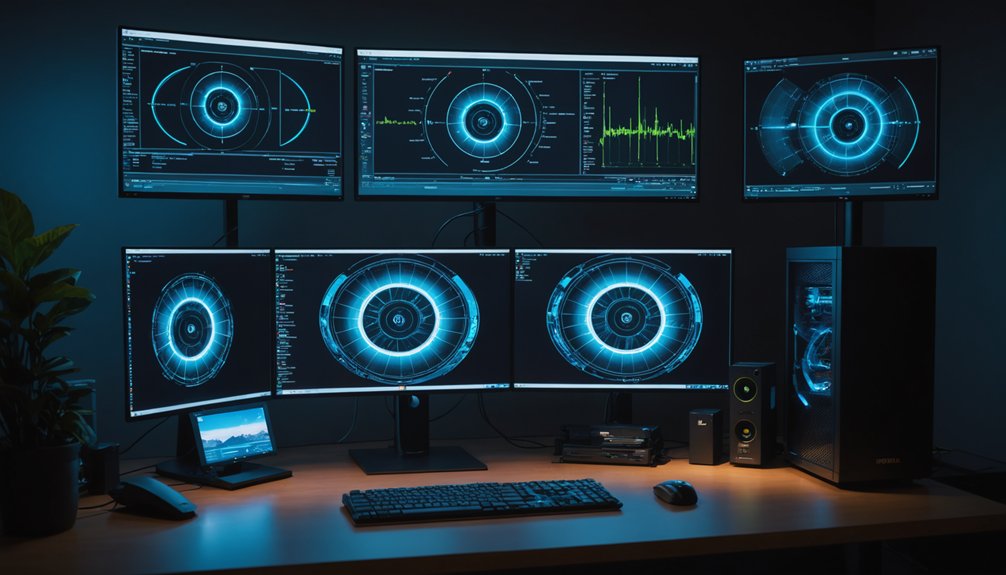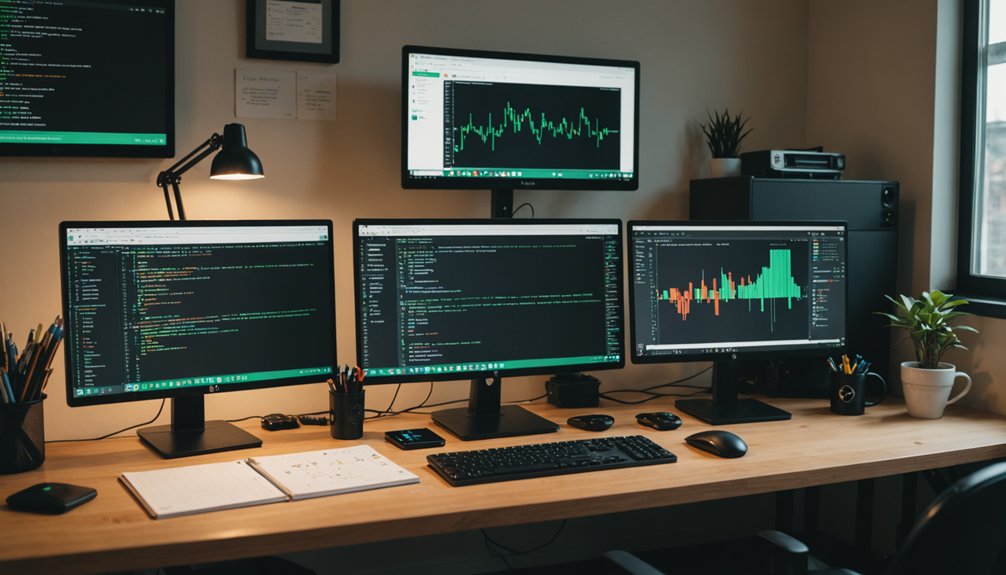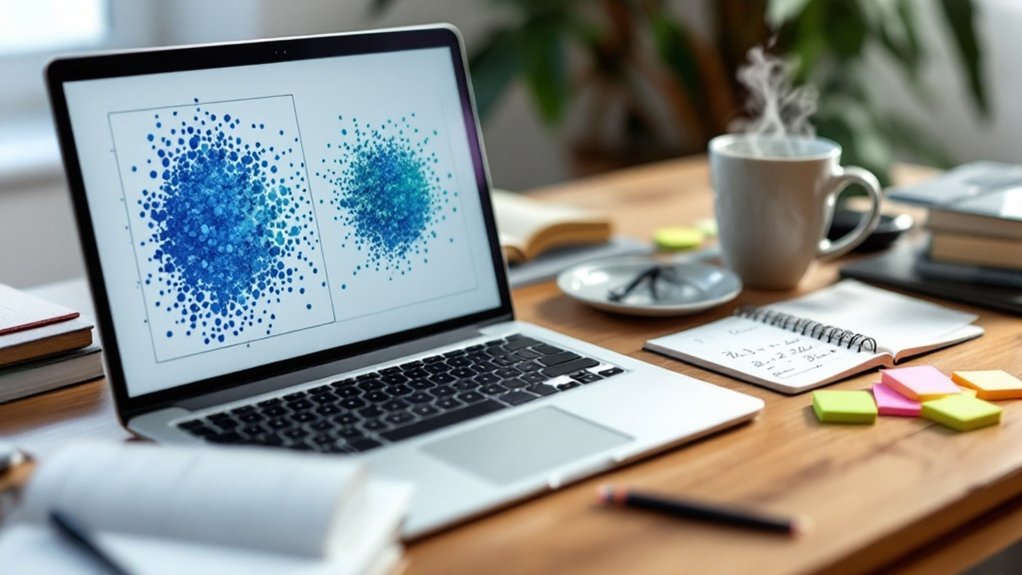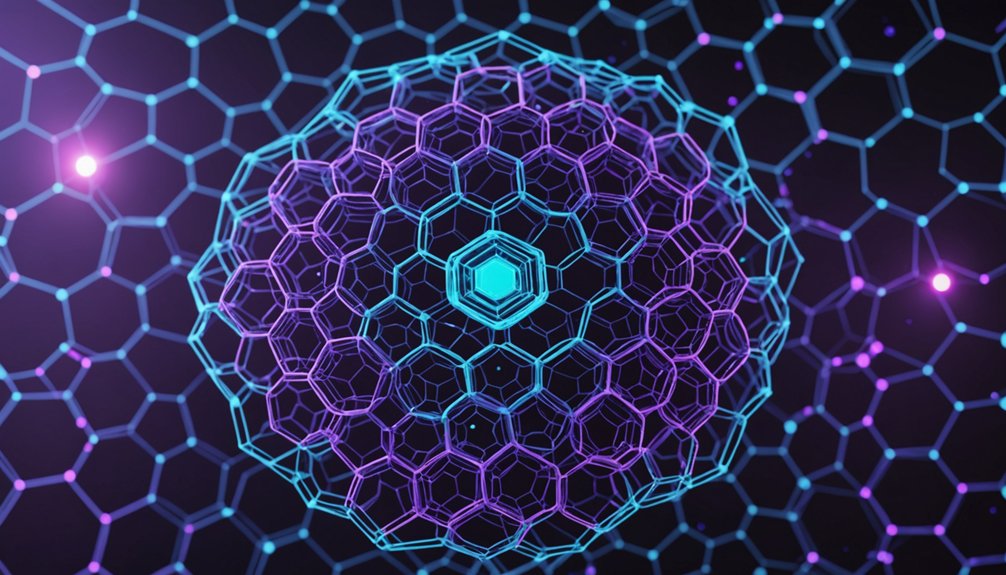Training stable diffusion models isn't a weekend project. First, collect thousands of quality image-text pairs. Garbage in, garbage out. Next, preprocess images to 512×512 pixels with normalization techniques. No shortcuts here. Then, select a pre-trained model from Hugging Face and fine-tune it. You'll need decent hardware—Google Colab works for starters, but serious training demands serious GPUs. The process takes days or weeks, but the customized results? Worth every computing minute.
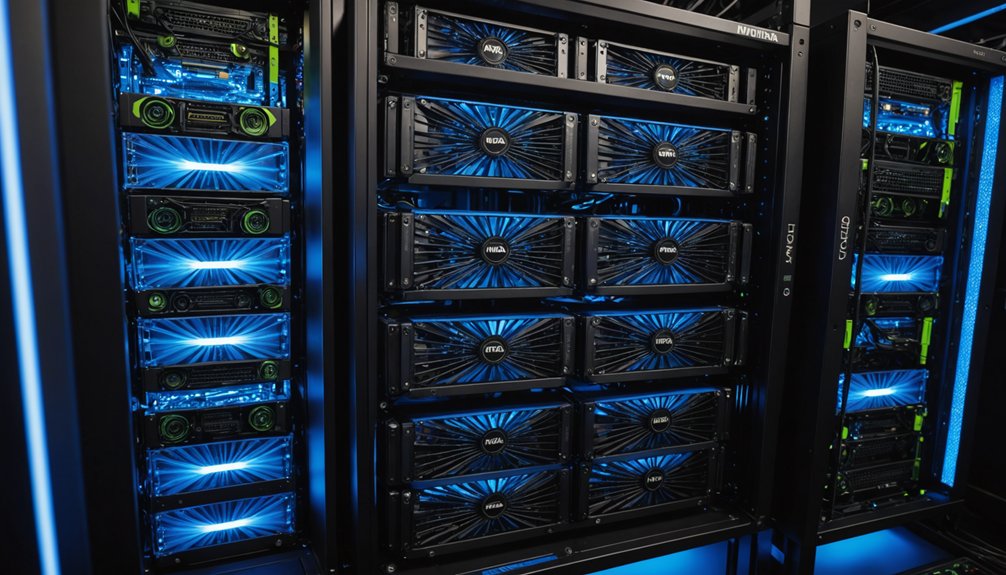
Training a stable diffusion model isn't for the faint of heart. It demands serious computational muscle and a heap of patience. These models, with their complex architecture including Variational Autoencoders, transform noise into stunning images through a process that's equal parts science and digital alchemy. Not everyone's cup of tea, honestly.
First thing's first: data collection. You need thousands of image-text pairs relevant to your domain. Want to generate Renaissance-style portraits? Better have a dataset full of them. Garbage in, garbage out—it's that simple. Clean your data ruthlessly; bad descriptions and poor-quality images will come back to haunt you. Like a ChatterBot trainer, the quality of your training data directly impacts the model's performance.
Your AI is only as good as the data you feed it. Clean it obsessively, or face the consequences.
Preprocessing is non-negotiable. Images typically get resized to 512×512 pixels. Normalization, standardization, flips, rotations—all these techniques matter. The Boomerang method can be used to preserve image integrity while enhancing local sampling. They're boring but critical. Skip them at your peril.
Model selection comes next. Most folks start with pre-trained models from Hugging Face. Why reinvent the wheel? These models already understand basic concepts; you're just fine-tuning them for your specific needs. Smart, not hard. Control Net tools can enhance the model's ability to generate precise, controlled outputs.
The training environment matters. Google Colab offers free GPU access, but serious training? You'll need something beefier. An NVIDIA A100 would be nice. Dream big.
Setting up the training loop is where things get technical. Hyperparameters can make or break your model. Batch sizes around 8, learning rates around 1e-6—these aren't random numbers. They're starting points from countless hours of collective trial and error.
During training, monitor your loss values like a hawk. Generate sample images periodically. They'll look like abstract nightmares at first. That's normal. Patience.
The whole process takes days, sometimes weeks. It's expensive. It's frustrating. But when your model finally starts generating images that match your vision? Worth every cursed moment and dollar spent. Applying proper regularisation techniques during training will significantly improve how well your model generalizes to new prompts.
Frequently Asked Questions
How Much Does It Cost to Train Stable Diffusion Models?
Training Stable Diffusion models isn't cheap. Costs typically range from $40,000 to $200,000, depending on optimization strategies.
Original models cost around $200k in A100-40G GPU hours. Companies like Anyscale and MosaicML have slashed these figures dramatically—down to under $50k.
Fine-tuning pre-trained models, batch size optimization, and distributed training all help cut expenses. Advanced scheduling and latent precomputation make a difference too.
Not pocket change, clearly.
Can I Train Stable Diffusion on a Laptop?
Training Stable Diffusion on a laptop? Technically possible.
Realistically painful. Most laptops lack the necessary GPU power and memory. You'll face frustratingly slow processing, overheating, and possibly crashes.
Standard laptops just aren't built for this kind of computational workout. Cloud platforms like Google Colab offer a more practical alternative—remote access to powerful GPUs without melting your keyboard.
Save yourself the headache.
How Long Does Training Typically Take?
Training times for stable diffusion vary wildly.
Basic fine-tuning? Maybe a few hours. Full model training? Weeks to months. No joke. It depends on hardware (good luck with that laptop), dataset size, and training complexity.
A decent setup with A100 GPUs might need 2-3 days for simple customization, while extensive model development demands serious compute time.
Bigger models, longer waits. That's just how it is.
Which Datasets Work Best for Specialized Image Generation?
For specialized image generation, dataset choice matters. A lot. FFHQ and CelebA dominate for faces—no contest there.
Animal enthusiasts? CUB-200-2011 for birds, Stanford Dogs for, well, dogs.
Fashion? Fashion-Gen's high-def images and detailed descriptions are killer.
Want something niche? FIGR-8 handles few-shot generation like a champ.
The right dataset makes all the difference. Garbage in, garbage out. Simple as that.
Can I Combine Multiple Trained Models Together?
Yes, multiple trained Stable Diffusion models can be combined through model merging.
The process allows integration of features and styles from different models. Models should be similar types for effective merging. Users set merge ratios to control each model's influence in the final output.
The technique enhances performance and creativity without training from scratch. Experimentation with various ratios yields different results.
Specialized tools like Checkpoint Merger Tool facilitate this process. Pretty handy stuff.
